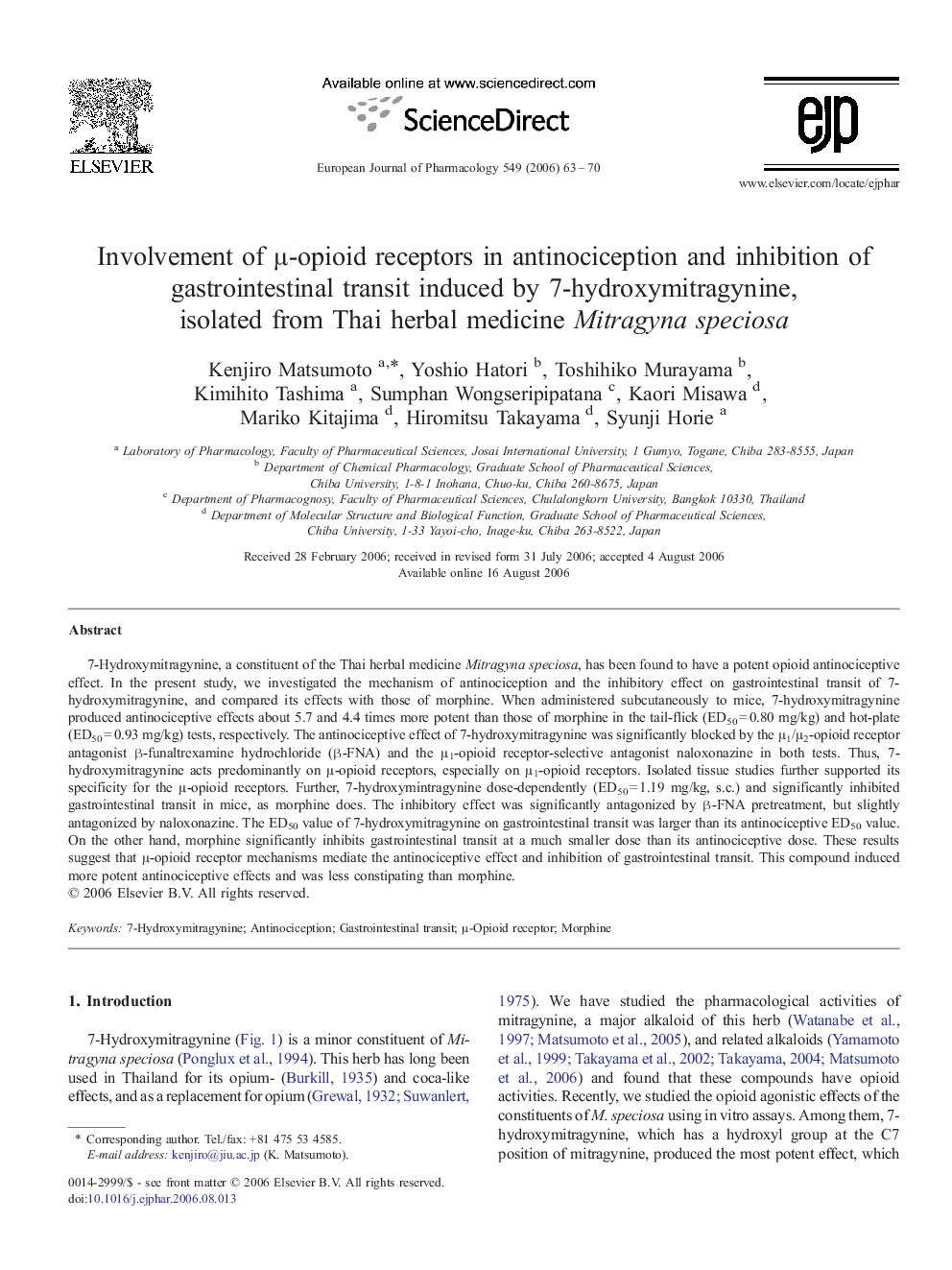| Article ID | Journal | Published Year | Pages | File Type |
|---|---|---|---|---|
| 2536787 | European Journal of Pharmacology | 2006 | 8 Pages |
7-Hydroxymitragynine, a constituent of the Thai herbal medicine Mitragyna speciosa, has been found to have a potent opioid antinociceptive effect. In the present study, we investigated the mechanism of antinociception and the inhibitory effect on gastrointestinal transit of 7-hydroxymitragynine, and compared its effects with those of morphine. When administered subcutaneously to mice, 7-hydroxymitragynine produced antinociceptive effects about 5.7 and 4.4 times more potent than those of morphine in the tail-flick (ED50 = 0.80 mg/kg) and hot-plate (ED50 = 0.93 mg/kg) tests, respectively. The antinociceptive effect of 7-hydroxymitragynine was significantly blocked by the μ1/μ2-opioid receptor antagonist β-funaltrexamine hydrochloride (β-FNA) and the μ1-opioid receptor-selective antagonist naloxonazine in both tests. Thus, 7-hydroxymitragynine acts predominantly on μ-opioid receptors, especially on μ1-opioid receptors. Isolated tissue studies further supported its specificity for the μ-opioid receptors. Further, 7-hydroxymintragynine dose-dependently (ED50 = 1.19 mg/kg, s.c.) and significantly inhibited gastrointestinal transit in mice, as morphine does. The inhibitory effect was significantly antagonized by β-FNA pretreatment, but slightly antagonized by naloxonazine. The ED50 value of 7-hydroxymitragynine on gastrointestinal transit was larger than its antinociceptive ED50 value. On the other hand, morphine significantly inhibits gastrointestinal transit at a much smaller dose than its antinociceptive dose. These results suggest that μ-opioid receptor mechanisms mediate the antinociceptive effect and inhibition of gastrointestinal transit. This compound induced more potent antinociceptive effects and was less constipating than morphine.
